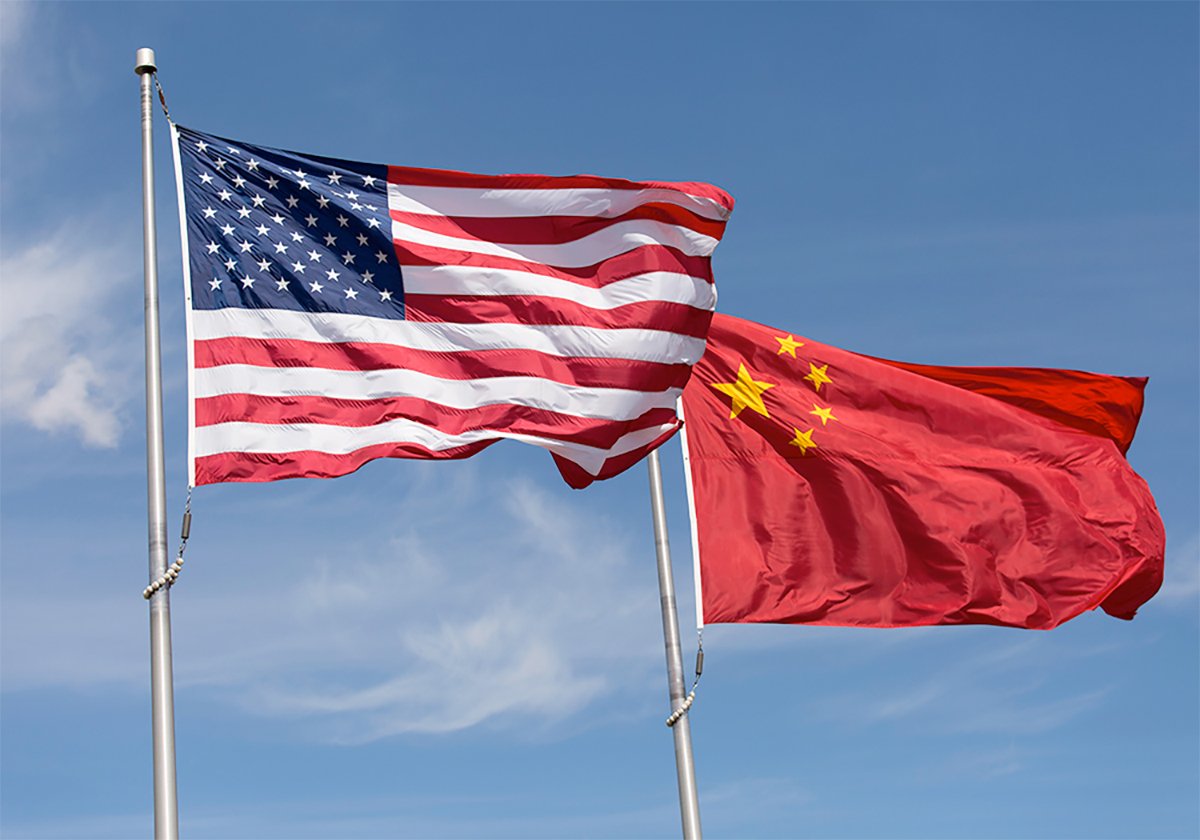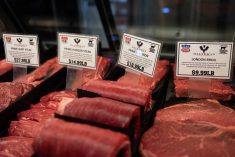BEIJING (Reuters) – China retaliated swiftly on Tuesday against fresh U.S. tariffs with hikes to import levies covering USD$21 billion worth of American agricultural and food products, moving the world’s top two economies a step closer towards an all-out trade war.
Beijing also slapped export and investment curbs on 25 U.S. firms, on grounds of national security, but, unlike when it retaliated against the Trump administration’s February 4 tariffs, this time avoided punishing any household names.
Follow all our coverage of the tariffs situation here
Read Also

Manitoba extends Crown land rent freeze
Manitoba government links the continued rental rate freeze on grazing and forage leases to economic and environmental challenges facing the industry
“Trying to exert extreme pressure on China is a miscalculation and a mistake,” a foreign ministry spokesperson told a press conference in Beijing, adding that China had never succumbed to bullying or coercion.
The latest retaliatory measures came as the extra duty of 10 per cent U.S. President Donald Trump threatened for the world’s second-largest economy took effect at 0501 GMT on March 4.
That makes for a cumulative 20 per cent tariff in response to what the White House considers Chinese inaction over drug flows.
China has accused the White House of “blackmail” over its tariff hike, saying it has some of the world’s toughest anti-drug policies.
Analysts say Beijing still hopes to negotiate a truce on tariffs, deliberately setting its hikes below 20 per cent to leave its negotiators room to hash out a deal, but each escalation reduces the chance of a rapprochement.
“China’s government is signalling that they do not want to escalate,” said Even Pay, an agriculture analyst at Trivium China.
“It’s fair to say we’re in the early days of Trade War 2.0,” Pay said, adding there was still time to avoid a protracted trade war if Trump and Chinese President Xi Jinping were able to strike a deal.
Later on Tuesday, China said it would investigate U.S. producers of a type of optical fibre for circumventing anti-dumping measures, suspended the import licences of three U.S. exporters, and halted China-bound shipments of U.S. lumber.
The new U.S. tariffs represent an additional hike to pre-existing levies on thousands of Chinese goods.
Some of these products took the brunt of sharply higher U.S. tariffs last year under then President Joe Biden, including a doubling of duties on semiconductors to 50 per cent and a quadrupling of tariffs on electric vehicles to more than 100 per cent.
The 20 per cent tariff will hit several major U.S. consumer electronics imports from China that had previously escaped untouched, from smartphones and laptops to videogame consoles, smartwatches, speakers and Bluetooth devices.
China responded immediately after the deadline, with an additional tariff of 15 per cent tariff on U.S. chicken, wheat, corn and cotton and an extra levy of 10 per cent on U.S. soybeans, sorghum, pork, beef, aquatic products, fruits and vegetables and dairy imports from March 10.
The additional levies will hit about 15 per cent of U.S. exports to China or $21 billion worth of trade, according to Reuters calculations based on U.S. census data for 2024.
Beijing also added 15 U.S. companies to its export control list that bars Chinese firms from supplying American companies with dual-use technologies.
It also put 10 U.S. companies on its Unreliable Entity List for selling arms to Taiwan, which China claims as its own territory, although the self-governing island rejects that.
“We’re still on track to 60 per cent (tariffs),” said Cameron Johnson, a supply chain expert at Tidalwave Solutions, referring to Trump’s campaign trail threat.
“At the moment, with 20 per cent, it just barely moves the needle for companies wanting to move potential supply chains out of the country,” he added.
“At 35 per cent, we start to see that companies will start to move or consider other strategies.”
China is the biggest market for U.S. agricultural products, and the sector has long been vulnerable to being used as a punching bag at times of trade tension.
Chinese imports of U.S agriculture goods fell for a second year to USD$29.25 billion in 2024, from USD$42.8 billion in 2022.
China’s futures markets were steady on the news.
The most actively traded soymeal DSMcv1 and rapeseed meal CRSMcv1 futures in the world’s biggest agricultural importer rose 2.5 per cent on Monday after the Global Times said Beijing planned to target U.S. agricultural exports.
SUPPLY-CHAIN SHIFTS
Trade tension risks exacerbating U.S. inflation and China’s efforts to ensure a durable post-COVID economic recovery, which has been heavily reliant on exports.
On Tuesday, the U.S.-China Business Council (USCBC) applauded Trump’s goal of tackling illegal trade in fentanyl, but said raising tariffs on Chinese products was not the way to achieve that goal.
“Across-the-board tariffs will hurt U.S. businesses, consumers, and farmers and undermine our global competitiveness,” its president, Sean Stein, said in a statement.
All the same, the China-U.S. trade war could benefit third countries.
Since the United States and China imposed tit-for-tat tariffs during Trump’s first term, Beijing has moved to cut its reliance on American farm goods by spurring domestic production and buying more from countries such as Brazil.
U.S. agricultural exporters could also step up efforts to replace the China market by shipping more to Southeast Asia, Africa and India.
“Chinese tariffs on U.S. wheat and corn imports should be supportive for demand for Australian wheat and barely exports,” said Dennis Voznesenki, an analyst at Commonwealth Bank in Sydney.
“However, China’s recent slowdown in imports of feed grains from all origins should temper the excitement.”















